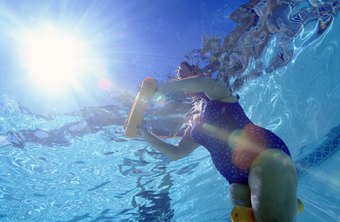


Positive subliminal visual cues — words, pictures and symbols unidentifiable in your consciousness — have been shown to improve performance in endurance athletes. Based on research from the University of Kent and Bangor University, athletes presented with positive cues were able to cycle significantly longer to exhaustion than those shown negative or neutral cues.
The positive subliminal cues included the words ACTION, GO, LIVELY and ENERGY, and happy faces. Negative cues were STOP, TOIL, SLEEP and TIRED, and sad faces. The words and faces appeared on digital screens in front of the athletes for less than .02 seconds, and were also surrounded by other images, making them unrecognizable to the athletes’ conscious.
Coach Ken's presentation at the United Hospital System, Physical Therapy & Athletic Training Rehabilitation, X*CEL Performance Educational Series.
Periodization is a "time management" technique of training, where the training year is divided into specific periods related to the athlete's racing plans. Each period has a distinct area of fitness to improve, while maintaining the fitness levels achieved in previous periods. The basic principles of periodization are:
by Kevin Koskella, www.triswimcoach.com
Most coaches will subscribe to the "no pain, no gain" philosophy. More is better, faster is better, tighter intervals are better, etc. This is not the Tri Swim Coach method!
Especially with the sport of Triathlon, it is easy to overtrain your body. Most of us belong to groups, whether it's a masters swim team, bike club, or running group, and there will always be pressure to keep up. It may be underlying or it may be outright, but no doubt, that pressure to go faster is always there.
Want to run better? Try not running one or two times a week. But don't sit on the couch. Instead, cross train.
Many runners have discovered the advantages for cross training, and many training plans include an "XT" (for cross training) one or two days a week. Cross training is simply a non-running aerobic workout that is substituted for one of your running workouts. This other activity supports your running program and your overall running goals.

 Aqua jogging, or water running, has long been use as a therapy for injured runners or as a substitute for running or jogging on land. The buoyancy of water when running can reduce stress on the joints of the lower extremities by 90 percent. By adjusting the intensity of the workout, athletes can maintain cardiovascular fitness with minimum stress on their bones and joints. Deep-water running is usually done with some type of flotation belt. However, there are advantages to aqua jogging without a belt.
Aqua jogging, or water running, has long been use as a therapy for injured runners or as a substitute for running or jogging on land. The buoyancy of water when running can reduce stress on the joints of the lower extremities by 90 percent. By adjusting the intensity of the workout, athletes can maintain cardiovascular fitness with minimum stress on their bones and joints. Deep-water running is usually done with some type of flotation belt. However, there are advantages to aqua jogging without a belt.
Photo Credit: Thinkstock/Stockbyte/Getty Images